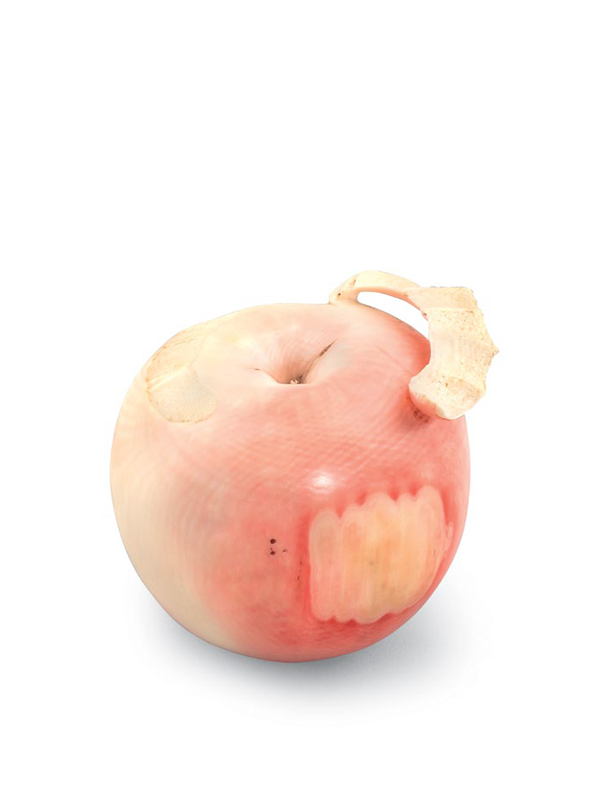Ivory okimono of an apple
Japan, Meiji period, 1868 – 1912
An ivory okimono, naturalistically carved to represent an apple. The apple has a section of skin peeled back to reveal the white flesh underneath. The skin is stained partly pink and the small stalk is stained a brown colour.
[No longer available]
The term okimono in Japanese literally means “object for placement [on display]”. Hyper-realistic ‘trompe-l’oeil’ ivory carvings of fruit, in the form of tangerines and bananas were very popular in Japan during the Meiji period. An ivory carving of a tangerine, described as Chinese but probably made in Japan, is in the Kwan collection.1
- Kao, Mayching (ed.) Chinese ivories from the Kwan Collection, Art Gallery of the Chinese University of Hong Kong, 1990, no. 155, pp. 310-31

